Life sucks. Okay, that’s a little dramatic… but you’ve got to admit that some things about life really do suck. Like that we’re all going to die. Or that we can’t really avoid illness. Everyone agrees: those things suck.
To be more serious, what I’m trying to say is that life is often challenging. So, wouldn’t it be great if we could go somewhere to learn how to overcome the challenges better?
Like…
- How to remain calm and focused when life falls apart.
- How to escape society’s pressure to consume more.
- How to live without fear of losing what we have.
Well, good news! There is a place to learn all these abilities. It’s called philosophy!
I know what you’re probably thinking. Philosophy? You gotta be kidding me. Most people would agree that modern philosophy has a reputation of being not useful. BUT… there was a school of philosophy that was very different and it was called “Stoicism.” Right here, we’ll be exploring some of the best advice from one of the greatest “Stoic” philosophers—Seneca.
Who was Seneca?
Seneca (DailyStoic.com) was an important teacher and writer. He lived in Ancient Rome from around 4 BC to 64 AD. He became politically influential because he was the tutor of young Emperor Nero. But he was later sentenced to death by suicide, for allegedly planning to assassinate the emperor. (Yup, ancient Rome was not the nicest place!)
If you want to understand Stoicism, most experts agree Seneca is one of the top 3 classic authors, along with Epictetus and Marcus Aurelius (read our summary of his book Meditations).
Letters from a Stoic is made up of 124 letters that Seneca supposedly wrote to his friend Lucilius. However, we don’t know if he ever actually sent these letters to his friend. He probably always wanted these letters to be published because of how they are written.
🌱 1. Become Different: The goal of philosophy should be personal change
Like I mentioned before, modern philosophy is often seen as useless in real life. When I think of university philosophers, I imagine two old men arguing for months about the definition of “being.” Well, that ain’t gonna put food on the table for most people and their families!
The surprising thing is that Seneca, a philosopher who lived 2000 years ago, had similar opinions. In his Letters, he often criticized the direction that philosophy was going. Even in his time, he didn’t like that it was drifting into pointless word-games.
For Seneca, philosophy should always be a practical tool that helps us to deal with life’s very real problems, like pain, suffering, loss, confusion, uncertainty and fear.
The greatest ancient philosopher Socrates told us to “Know thyself.” Seneca went a couple steps further, telling us to “become a different person.” And so for Seneca philosophy was more like an early form of personal growth or psychotherapy.
In fact, a lot of modern therapy was partly inspired by Stoicism. Massimo Pigliucci, an author of some popular modern Stoic books, recently talked about the fact that mental techniques from ancient Stoicism have found their way into modern therapies like cognitive behavioral therapy, rational emotive behavior therapy, and Viktor Frankl’s logotherapy.
Seneca’s Stoicism was more like psychotherapy than modern philosophy. He focused on wisdom that would help us overcome life’s real problems like suffering, uncertainty and fear. He saw a lot of philosophy as being useless or even harmful.
😌 2. Thrive With Less: Getting things for social approval always leaves us unsatisfied
When we feel unsatisfied, what do we usually do? We try to change what is going on outside us. Maybe we go on a trip, splurge on a product, or eat some tasty food. And yeah, maybe we feel better for now, but the feeling never lasts long. Why? Because we are trying to fill what are really spiritual needs with material consumption.
In Letter 86, Seneca reveals that ancient people were basically the same as modern ones. He wrote about how, for people in his time, a regular simple bathroom was no longer good enough. No, people needed their bathrooms to fit the latest design trends, like circular mirrors, fancy walls and large windows—so they could tan while they bathed. Well, nothing much has changed today, has it? We buy a new shirt or phone or car, and soon the marketers are successfully convincing us that we need another thing, then another one…
Today, psychologists call this “hedonic adaptation”: What used to be a luxury, soon becomes a necessity that we expect, especially if we see our friends or neighbours having it too. It’s funny to see that Seneca already understood this concept 2000 years ago.
Well, if we can’t ever be satisfied, no matter how much more we will get, then isn’t that true poverty? That’s why Seneca tells us to go in the opposite direction. To be happy, we must learn how to feel great even with just a few things that are ‘essential’ and ‘enough.’
The key is to focus on our natural needs rather than social desires. Our natural needs for food, shelter and warmth are easy to fill. On the other hand, desires driven by social approval (like for the latest fashion or gadget) are endless and unquenchable.
Until we have begun to go without them, we fail to realize how unnecessary many things are. We’ve been using them not because we needed them but because we had them.
The personal finance book Your Money or Your Life says: “Money is something we choose to trade our life energy for. (…) Life energy is all we have. It is precious because it is limited and irretrievable and because our choices about how we use it express the meaning and purpose of our time on Earth.”
Money is our life energy. I think that’s a life-changing idea. Their book goes on to explain a healthy new approach to personal finance that is based on becoming more aware of what really provides value to our lives, instead of shaming ourselves whenever we spend money.
We are never satisfied by consumption, especially because it’s often driven by ever-shifting social trends. Instead, we should go the opposite way and learn to be happy with only the ‘essential’ things that fill our natural needs of hunger, shelter and security.
🔓 3. Escape Imagination: Becoming free of both fear and hope
In Letter 5, Seneca quotes Hecato, another Stoic philosopher who said “Cease to hope and you will cease to fear.” Now, this is a little confusing. Most of us would assume those feelings are NOT connected because hope is a positive emotion and fear is a negative one.
But Seneca goes on to explain that hope AND fear are both caused by a mind that is jumping into the future through imagination. When we hope, we imagine something good happening. When we fear, we imagine something bad happening. Yet the cause of both feelings is our mind’s imagination, rather than something we see with our eyes.
So if we want to stop fear, then we must stop mentally projecting ourselves into the future and live more in the present moment. This will also stop hope.
Well, I think this is a really astounding idea. It’s also one of the basic ideas behind a lot of meditation and mindfulness (PlumVillage.org). Mindfulness is the practice of holding our attention on something like our breathing, and using that physical sensation to live more in the present moment. It’s a way to escape our thinking mind that is often jumping into the future or past, making us feel unnecessary mental distress.
In fact, mindfulness has been scientifically proven to reduce stress, anxiety and worry. Mindfulness exercises are being included in more and more therapies (like M.B.S.R. and A.C.T.). So I think it’s really crazy that this book from a couple thousand years ago already understood the core idea behind a technique that modern therapists teach!
Twelve years ago, the teacher Eckhart Tolle introduced me to mindfulness in his book The Power of Now. One of the best sentences in that book is: “If you find your here and now intolerable and it makes you unhappy, you have three options: remove yourself from the situation, change it, or accept it totally.”
What he said is actually a classic piece of Stoic wisdom: change what you can control, then accept what you can’t control. And accepting something means that we’re at peace with it so we no longer need to escape it mentally with imagination into hope or worry.
Read more in our summary of The Power of Now by Eckhart Tolle
Fear and hope are both caused by the same thing—our mind projecting into the future through imagination. So if we can stop doing that, then we will stop both hope and fear. Practically, we can learn mindfulness skills to better remain in the present moment.
🌧️ 4. Get Ready For Tragedy: Preparing for life’s unpredictable misfortunes
In Letter 91, Seneca shares that his friend feels devastated because his home city of Lyons was burned down completely. It was a natural disaster that destroyed everyone’s homes and a lot of beautiful priceless architecture.
To ease his friend’s pain, Seneca offers two pieces of wisdom:
- Things tend to build back stronger. Thousands of years later, Nietzsche would famously write “Out of life’s school of war—what does not kill me makes me stronger.” For example, in Japan there are many large earthquakes, so they had to create strict building codes. As a result, modern Japanese buildings are now among the strongest in the world at resisting shaking.
- Prepare yourself mentally for the next tragedy. Throughout our lives, we are all devastated over and over again—by the death of loved ones, by illness, by disease and heartbreak and separation. Well, Seneca says these events feel especially brutal, when they come to us unexpected. So he recommends that all of us occasionally think about everything that could go wrong, no matter how low the probability.
Nassim Taleb is a financial trader who spends most of his life thinking about risk. In his book Fooled by Randomness, Taleb talks about life’s fundamental uncertainty. If history shows us anything, then it shows us that things are always going wrong in unexpected ways. That’s why we get financial crashes, recessions and depressions. If people could predict those events, nobody would suffer from them.
Yet it feels like people never learn the lesson that life is unpredictable. After a disaster passes, the academics go right back to using their abstract rational models to forecast the the future of the economy, when they can’t! And so maybe we all need to remember what the early philosopher Socrates said, “All I know is that I know nothing.” It is a motto of humility and skepticism.
Learn more in our summary of Fooled by Randomness by Nassim Taleb
When faced with a tragedy, we can find some comfort in knowing that things tend to rebuild stronger in life. To prepare for life’s inevitable tragedies, we should think about all the things that could possibly go wrong, even if they are very unlikely to happen.
🤝 5. Seek Fellowship: Learning from and teaching others both lead to mutual improvement
In Letter 6, Seneca recommends that his friend come to study with him, for two big reasons:
- His friend would learn more from being around him than from his ideas alone. In Seneca’s opinion, the great philosophers who studied under Socrates like Plato and Aristotle… they absorbed the most value simply from being around the man.
- Both teacher and student benefit from the process of teaching. For someone of Seneca’s older age, the true enjoyment of wisdom really came from having “someone to share it with.” This also reminds of “The Feynman Technique,” (Doist.com)—a way to learn faster created by the Nobel Prize winning physicist Richard Feynman. The most important step in that technique is to teach what you are trying to learn to someone else, like a child in 6th grade. By teaching the idea, you are forced to simplify it into your own words, so you grow to truly understand it.
It’s also clear that Seneca wanted to be exposed to people he disagreed with, not just like-minded friends. For example, in this book he most often quotes Epicurus, a philosopher who founded “Epicureanism,” which is often seen to be the exact opposite of Stoicism (because it argued that pleasure should be the main goal of life).
Seneca would recommend learning from someone else in-person if possible, because we often learn more from seeing WHO someone is than what they say. When we teach, we learn even more because we must truly understand something to explain it.
💀 6. Rehearse Death: Forever breaking our slavery to fear
For his whole life, Seneca suffered from asthma attacks, there were times when he suddenly had extreme difficulty breathing for an hour or two. In Ancient Rome, doctors called asthma ‘rehearsing death’ because it feels like each breath could be your last one.
Personally, I had asthma as a child. It was serious enough that I was rushed to the hospital 3 times by my parents. I can tell you that it is a very scary thing, needing to struggle for every next breath. Anyway, Seneca’s point here is…
Rehearsing our death is something that each of us should be doing regularly. This means remembering that we are going to die one day and no longer exist physically.
While this may sound depressing, it is actually the Stoic solution to many of our fears, like our fear of embarrassment or failure. It’s especially important for young people to do this exercise, because they feel further from death than old people. Yet none of us know when we will die—it could happen in one day, one month or 50 years.
Recently I’ve been reading the biography of Steve Jobs, the charismatic founder of Apple and Pixar. In one speech before university students, Steve Jobs said, “Remembering that you are going to die is the best way I know to avoid the trap of thinking you have something to lose. You are already naked. There is no reason not to follow your heart.” Maybe that is how he was able to take so many risks in his life and put himself out there. His mindset was very similar to important Stoic teachings. (And in case you don’t know, Steve Jobs died suddenly from cancer at the age of 56.)
The most important Stoic philosopher may have been Marcus Aurelius, a powerful Roman emperor who lived about 100 years after Seneca. Yup, that’s right. He was an influential philosopher who happened to be the emperor, the most powerful man in the world at the time. But it was also an extremely high-pressure position, with many emperors being assassinated or suffering terrible political attacks on their character.
Marcus was always reminding himself that he would be dead one day, and also everyone he knew would be dead too. He often used very visual language, telling himself he would soon be bones or ashes. He found this was the best cure for worrying about his reputation or caring what other people thought of him. In his private journal he wrote “You could leave life right now. Let that determine what you say and think.”
A key Stoic technique is to regularly remember that you’re going to die. This fact of death can help relieve our fears, especially about what people think. In a short time, we will all return to dust in this physical world.
- Reduce your consumption of something for 3-7 days. Pick something you enjoy but is not necessary, then go without it. For example, maybe avoid eating out at restaurants or playing video games. In Stoicism, this exercise helps us learn to be free of desires that are socially conditioned.
- Spend 5 minutes every morning escaping your imagination. For me, the most effective techniques are simple mindfulness exercises, like putting my focus on breathing. The goal is to get our attention into the real physical world and out of our minds. Our minds that are always projecting into the future, making us feel fear or hope.
- Write down a list of all that could go wrong for 20 minutes. Prepare yourself mentally for those unavoidable tragedies in life like illness, death and disaster. The goal here is to bring clarity to our fears by putting them on paper. However, be sure to stick to a set time limit and then turn your attention to something else. It’s really bad for our mental well-being to always be ruminating on that stuff.

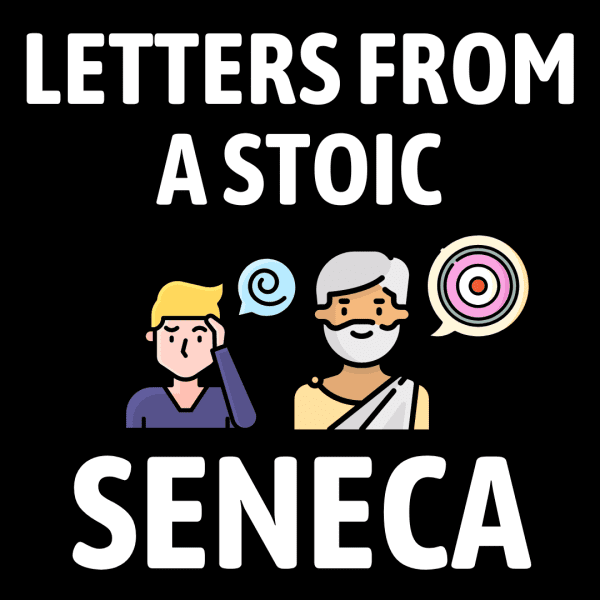
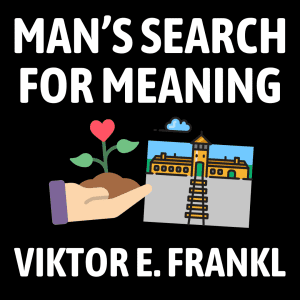
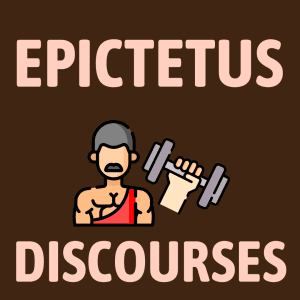
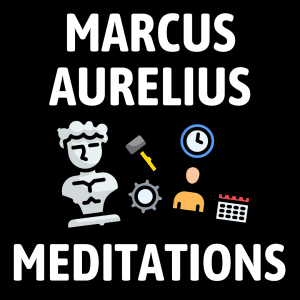

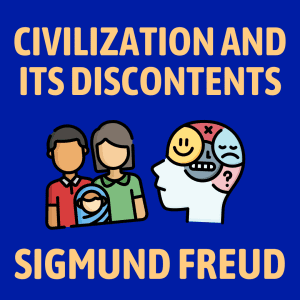

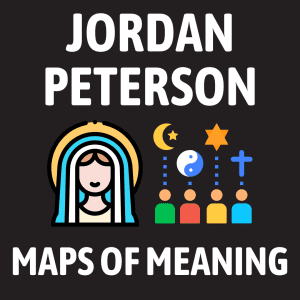
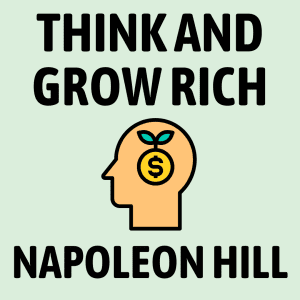
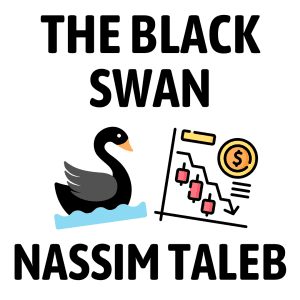
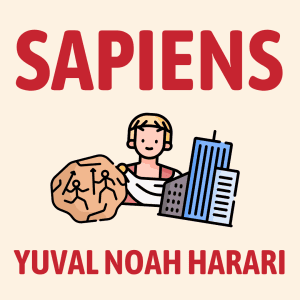

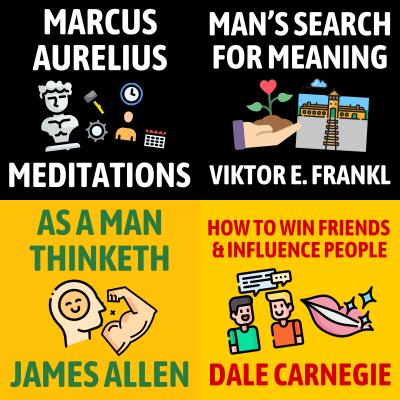
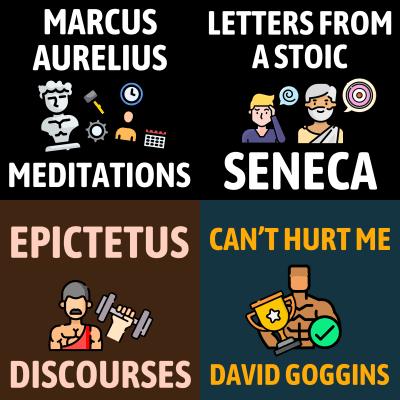











Community Notes